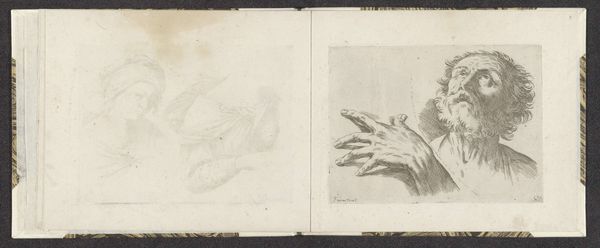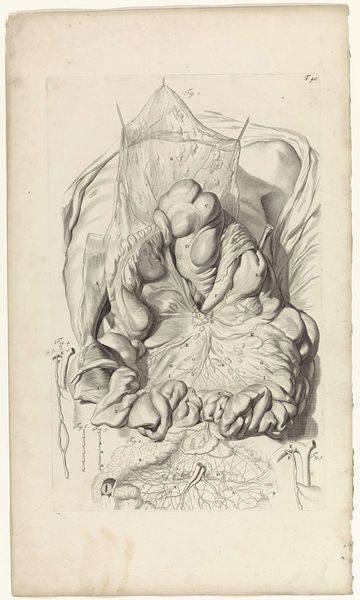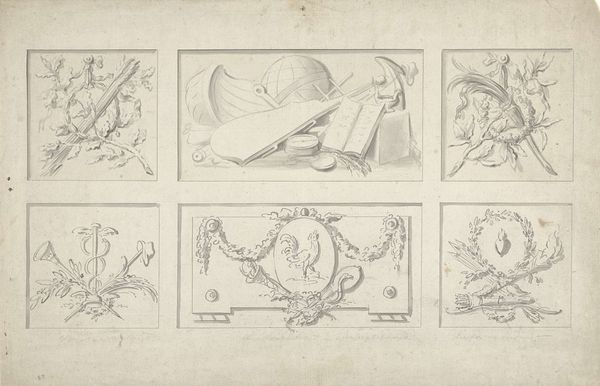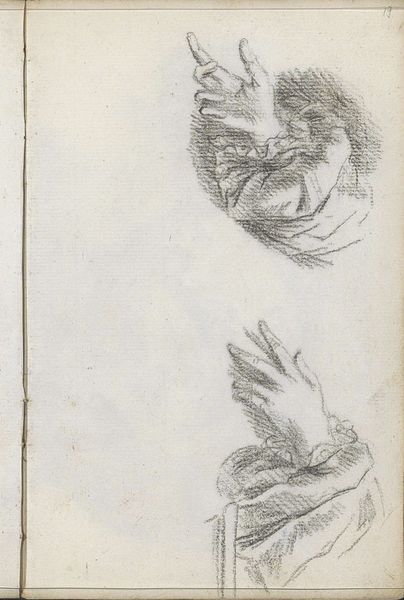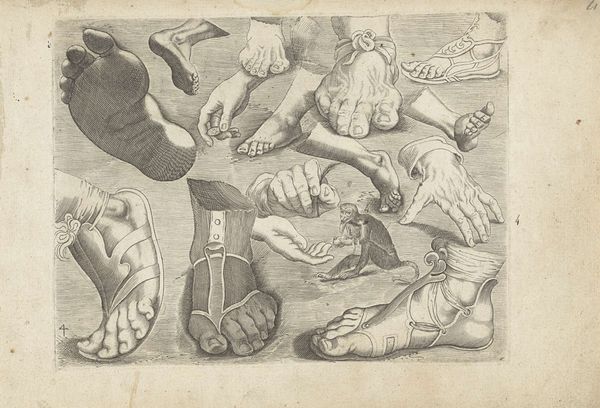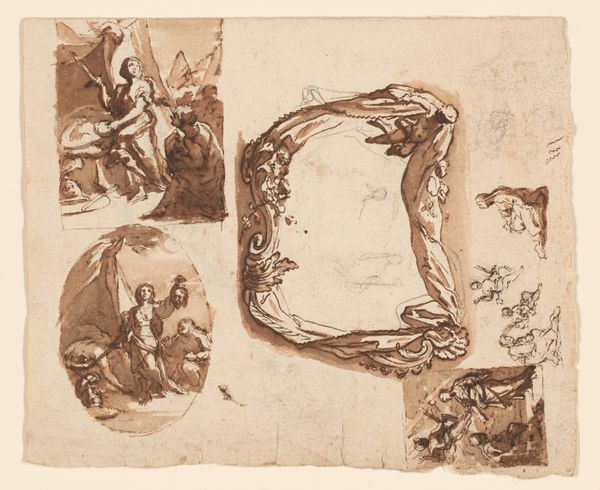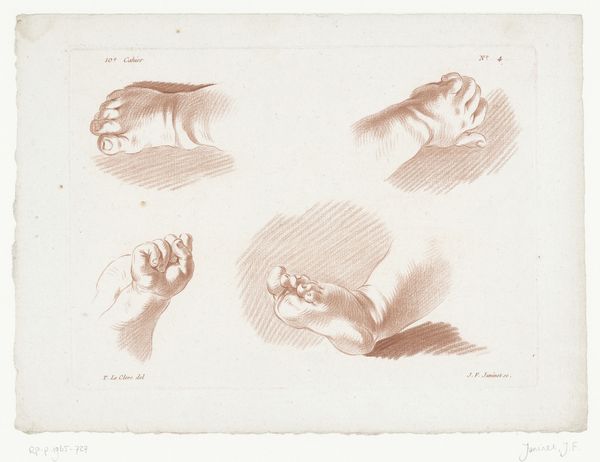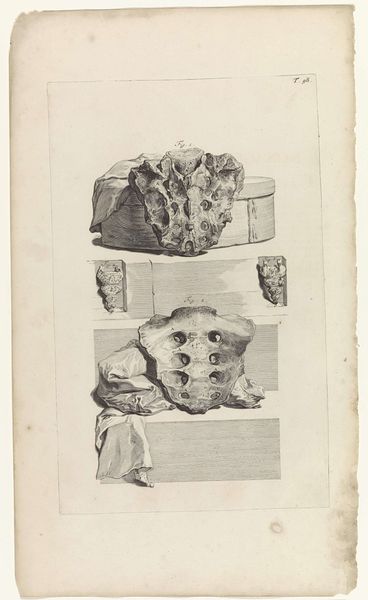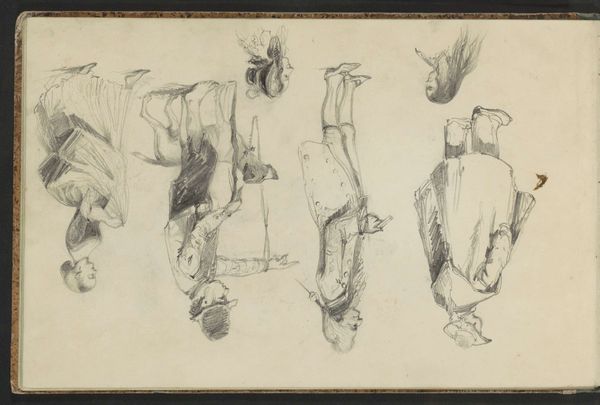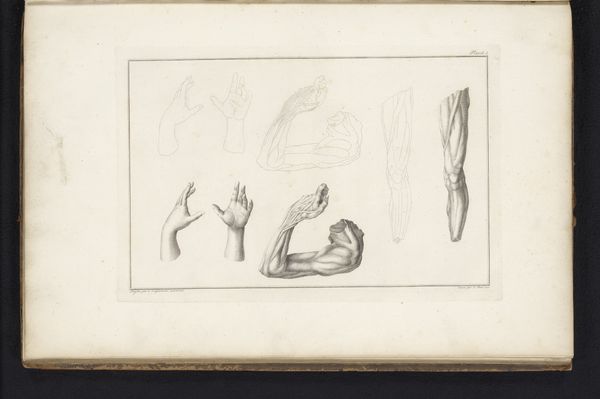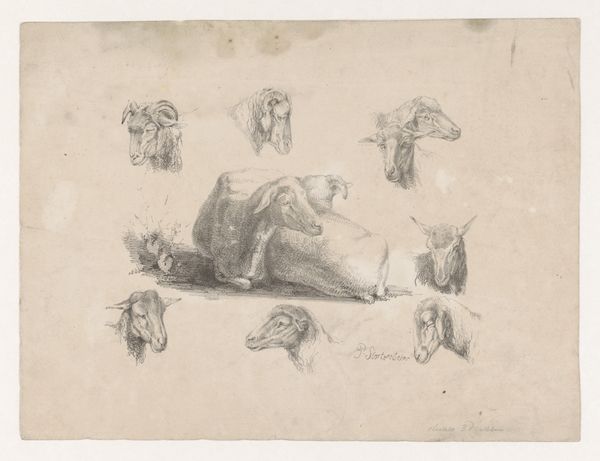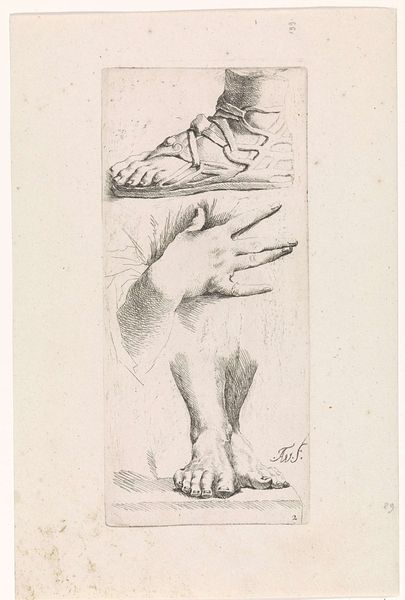
Studieblad met tekenvoorbeelden: handen en portret van Hendrick Goltzius c. 1610 - 1672
0:00
0:00
drawing, paper, ink
#
portrait
#
pencil drawn
#
drawing
#
light pencil work
#
pencil sketch
#
sketch book
#
mannerism
#
paper
#
ink
#
sketchbook drawing
#
pencil work
#
northern-renaissance
Dimensions: height 154 mm, width 201 mm
Copyright: Rijks Museum: Open Domain
Editor: This is "Studieblad met tekenvoorbeelden: handen en portret van Hendrick Goltzius," a drawing made with ink and pencil on paper, sometime between 1610 and 1672. What strikes me immediately is the focus on hands - it feels like a celebration of artistry, but also makes me wonder about the artist's intention. How do you interpret this sheet of studies? Curator: It's fascinating how you observe the focus on hands. Considering the period, the emphasis here also shines a light on the artist’s craft. Before photography, artists played a crucial role in visualizing society, disseminating knowledge and power, particularly in portraiture. The studies on this sheet almost break down the art making, and specifically how to depict. Editor: So it's like a peek behind the curtain, almost? It is interesting how, by focusing on the hands, we are actually encouraged to focus on *his* hand, the hand of the artist and maker. Curator: Precisely. Look at the small portrait included in the sheet, and consider how it ties into the artist representing other people's status. Who was Goltzius? Did he have a prominent public role? The mannerist style can emphasize the hand that can imply someone elevated social standing. The inclusion of hands actively *creating* with pens also gives a nod to his active role as an artisan. Editor: I didn’t immediately see that connection with the portrait - that really clarifies the artist’s interest in portraying the physical construction and social status through image making! Curator: Think about how this 'sketchbook page’ would have been consumed in its time and how artists used model books to disseminate stylistic choices and almost prototype various figure-poses. What does this work say about artistic influence and imitation during the Northern Renaissance? Editor: Now I’m thinking about the role of the artist, how their skill literally shapes perception and reflects society. I initially saw it as a sketch and it never occurred to me how the artist also communicated with society. Thanks for pointing that out!
Comments
No comments
Be the first to comment and join the conversation on the ultimate creative platform.
